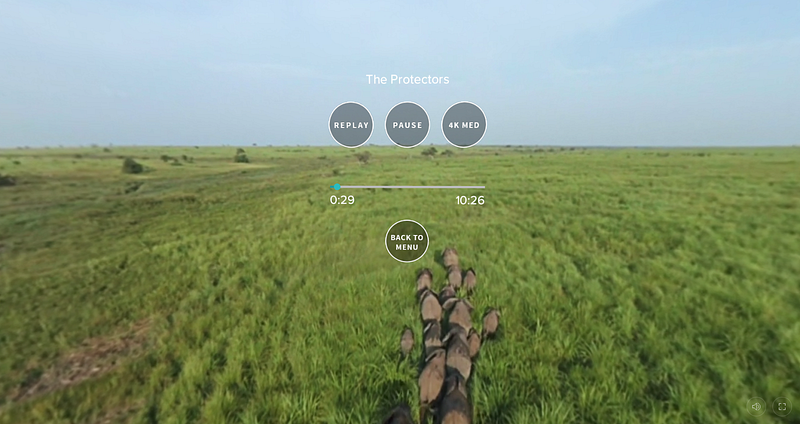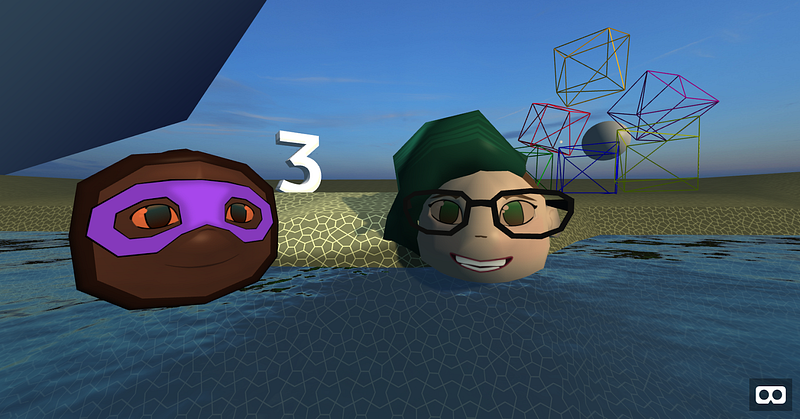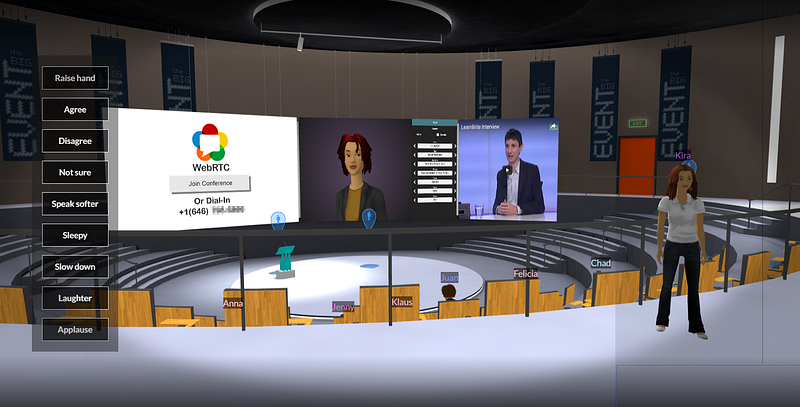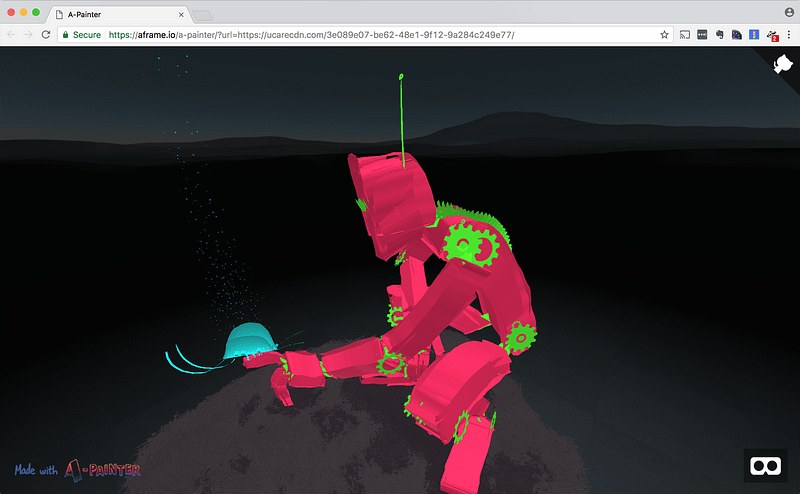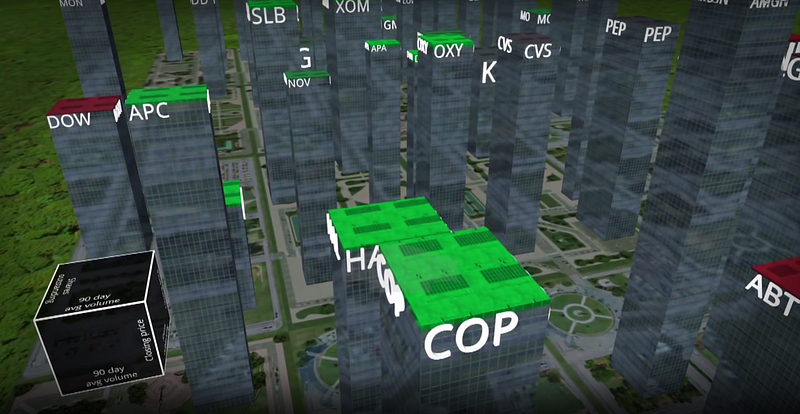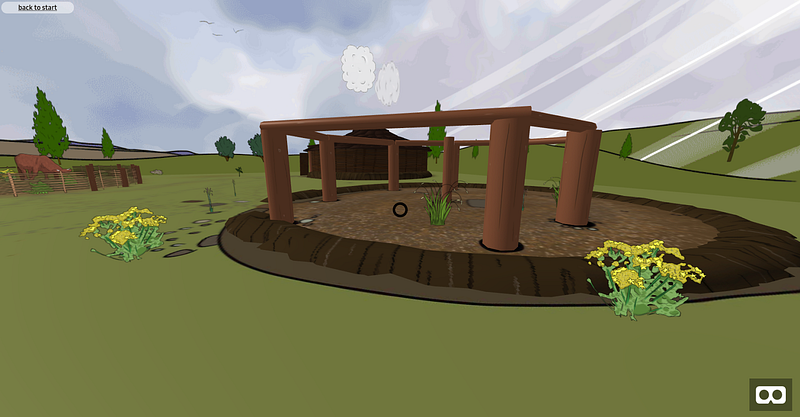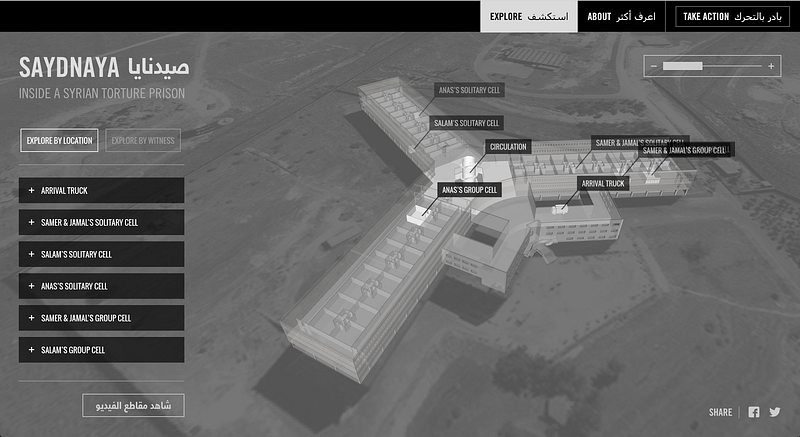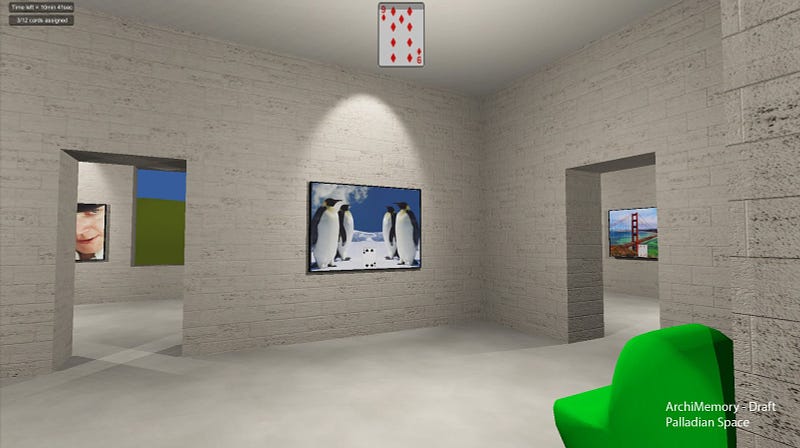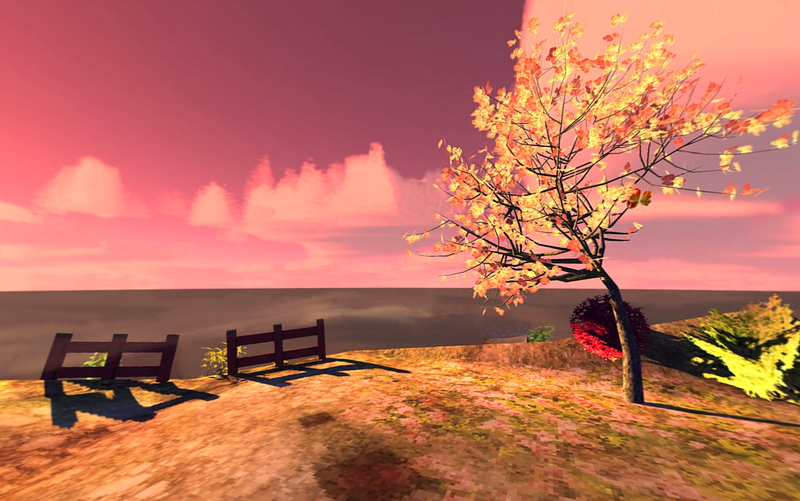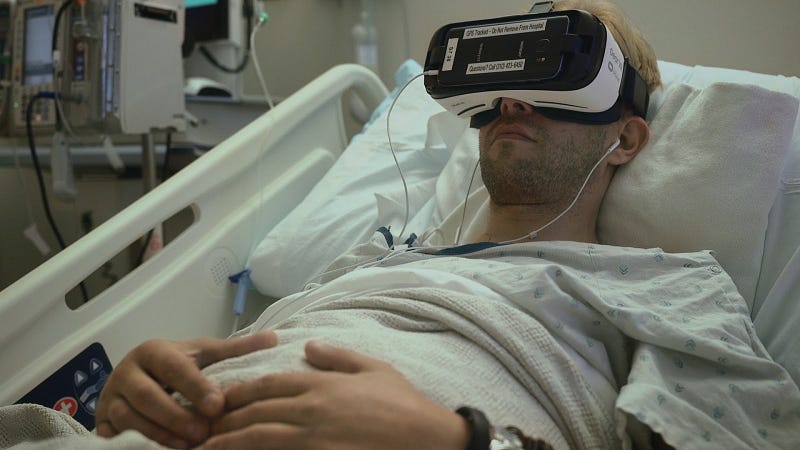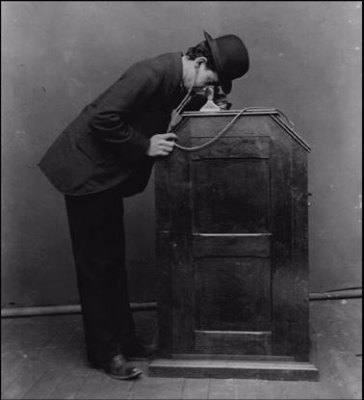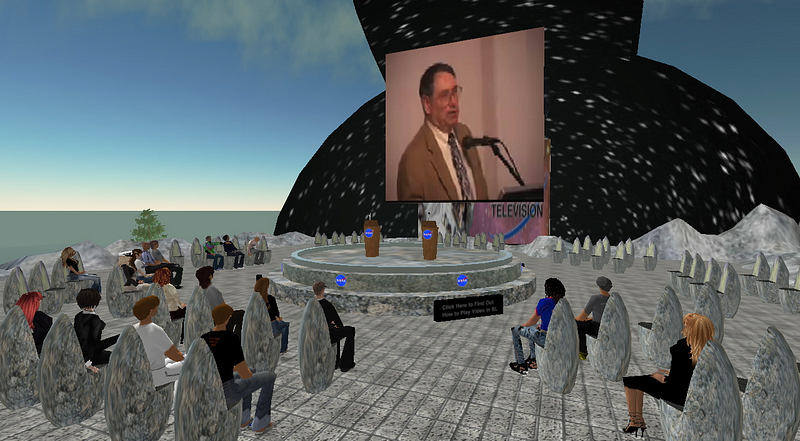Not Just Games! New & Unusual Uses of Virtual Reality
And how the Web can help…
Games are doing great things for Virtual Reality, driving the adoption of commercial headsets and fuelling innovation. However, VR is much more than just gaming. Let’s take a look at some different kinds of VR applications, to hopefully spark further ideas about where things are going and what the possibilities are.
This is the topic I spoke about at Oxford’s VR Crowd last week (slides here). Read on for the blog post version!
Firstly, live experiences. This doesn’t just include the obvious live events like concerts and sports matches, but pretty much anything where it would be useful to instantly transport yourself to another place.
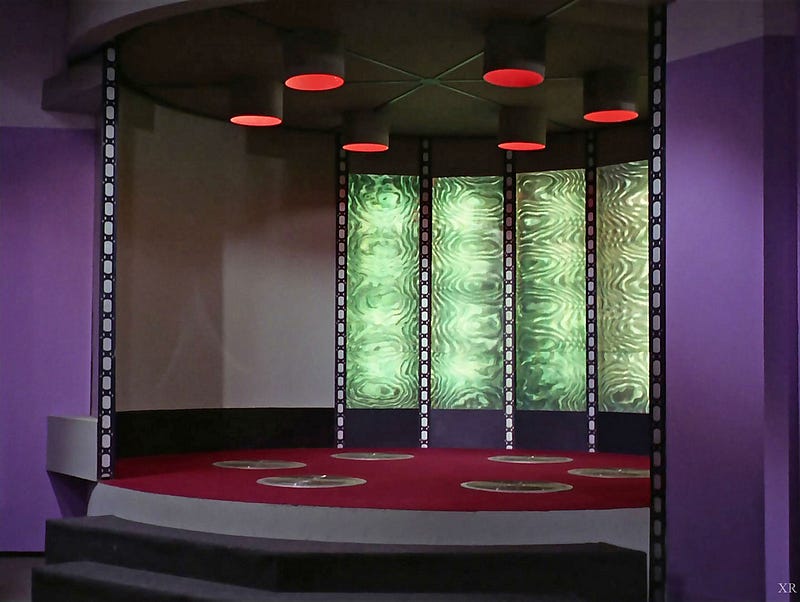
Star Trek Transporter room by James Vaughan
Storytelling can be more immersive now, with 360 degree video. Within are one of the platforms making this kind of content available.
The Protectors by Kathryn Bigelow and Imraan Ismail, National Geographic — via Within
VR can also bring people together from across the globe, for shared experiences. For example, my colleague Ada created a demo called Metaverse where you each get an avatar, and the ‘speaker’ avatar has controls to display presentational content and even change the environment dynamically.
We could see these kind of remote learning experiences eventually grow into really opening up and democratising education.
And we don’t have to just sit and watch and listen, we can use VR to train ourselves up. This was a quick demo I made a few years ago, for fire safety training, using the Oculus Rift and the Leap Motion. In a safe environment, you could practice taking the correct fire extinguisher and aiming it at a fire to put it out:
“Interactive VR” prototype by Future Technologies, Pearson
We don’t just need to consume content that people have created for us, we can create our own. We could use one virtual world to create another virtual world, giving new powers for creativity and design.
This is an example that someone created in A-Painter, which is like a Web version of Tiltbrush. The really nice thing about this being on the Web is that you can share your creation via a URL. Even if people don’t have a VR headset to hand, they can still see your content in 2D and navigate around it with their mouse/touchscreen/keyboard.
An A-Painter creation by feiss, from the A-Painter Gallery
VR can also help us to visualise data. Imagine you’re reading an article about how the Nasdaq stock price index has changed over time. But instead of just a description, or a 2D graph, there was an associated VR experience that could let you really feel what the tech bubble burst was like. By riding the Nasdaq Index Rollercoaster!
This might be a slightly silly example, but they got a positive reaction to it, with comments like “I would never read an annotated timeline of the Nasdaq but this brings it to life for me”.
And we can imagine using virtual worlds to convey more complex, abstract data, in order to better navigate and understand it. This was an example called Stock City that an investment firm created to visualise their portfolio. The virtual buildings represented stocks, with their widths indicating the number of shares and the heights indicating their stock price. Bloggers have speculated about future features such as flocks of birds to represent social media mentions and road traffic to indicate trading volume!
Again, this could seem a bit silly, but there’s a really interesting idea behind this — that the best medium for us to understand something is a spatiotemporal world, a 4D environment like the one in which we live. Because that’s what we’ve all been learning to navigate since birth.
“We will use VR to solve abstract problems by mapping them into the spatiotemporal domains in which we are all experts… Solving a problem could seem no harder than walking to the store to get some milk.”
Beau Cronin
Next up is the Internet of Things. Here is an example from some of our Samsung colleagues, who created a VR experience that accompanies this model bridge — revealing realtime data from sensors, via the cloud. The next step could be to use the VR app for input as well as output.
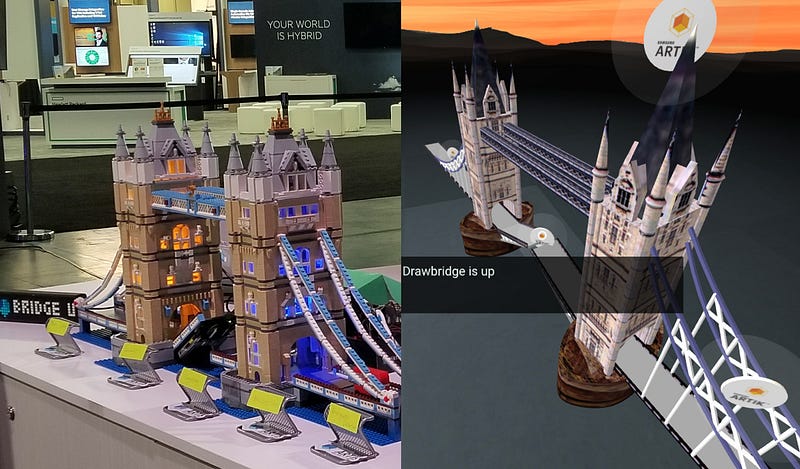
How about archaeology? Diego worked with an archaeologist from the Achavanich Beaker Burial Project to create a VR app to bring a ~4000 year old village in Scotland back to life, based on archaeological remains discovered at the site.
Ava by The Achavanich Beaker Burial Project and Samsung Internet
We can kind of consider this as time travel! Another exciting example in the works is a recreation of turn-of-the-century Luna Park on Coney Island. The idea is that you will be able to tap a button to jump to another point in time, seeing the architecture around you change.
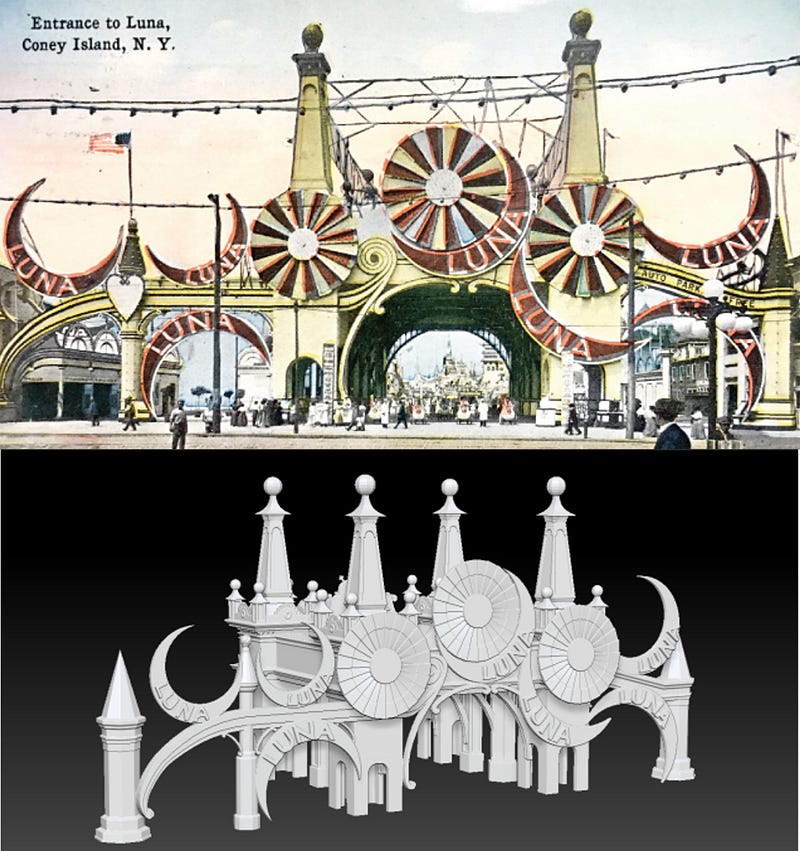
Luna Park project — thegreatfredini.com
A related example is “forensic architecture”, which can help to provide evidence for prosecutions. Explore Saydnaya is a 3D reconstruction (not VR, yet) of a notorious Syrian prison, based on witness testimony from survivors.
Explore Saydnaya by Amnesty International
One of the developers behind it has gone on to work on a PhD project to use Virtual Reality for memorisation. This is based on the techniques used by memory masters, who often visualise walking through a building and seeing items in various rooms, to help them recall incredible numbers of objects.
ArchiMemory (draft) by Pierre-Francois Gerard
Another one from Diego, along with designer Galina Mihaleva: VR Tranquilitie, made for an exhibition at a fashion tech festival. The dress has lights that respond to ambient noise, and there’s an accompanying VR experience that lets you visualise the noise levels in different parts of the world.
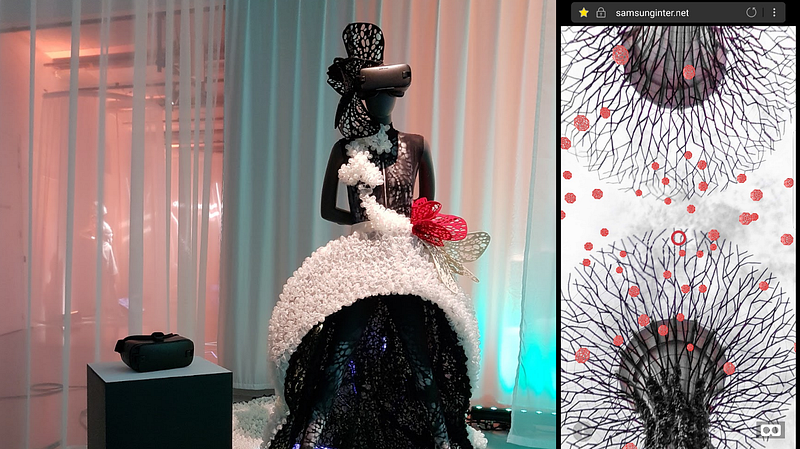
VR Tranquilitie by Diego Gonzalez and Galina Mihaleva
If it all gets a bit much, you could use a VR meditation experience to help you relax, transporting yourself to somewhere peaceful.
A few years ago my colleagues at Pearson developed an immersion therapy prototype that school psychologists could use with school children who might be affected by bullying. Developed for the Oculus Rift Developer Kit, it took inspiration from research suggesting that VR can be beneficial for treating psychological problems such as post-traumatic stress and phobias.
Fishfinder by Future Technologies, Pearson
Staying with the medical theme, there’s promising research showing that VR can be useful for pain relief, even being as effective as drugs, and removing the side effects. A University worked with a burns centre to try out a VR experience called SnowWorld, to help distract patients receiving painful burn treatments.
Virtual Reality for Management of Pain in Hospitalized Patients
And people have even been experimenting with VR for embodiment. In this experiment, BeAnotherLab hooked up a live, first-person camera feed to enable a person in a wheelchair to see herself dancing on her feet.
Update: This idea of seeing things from another perspective leads me onto a final example (thanks to Clorama). Many people are excited about VR as an “empathy machine”, especially since Chris Milk’s TED talk in 2015. There is intriguing potential for using VR for reducing biases. A study on VR’s effects on ‘racial implicit association’ has found a fascinating result:
The scientists found that the virtual reality experiment reduced the participants’ implicit racial biases, but only if they embodied a dark-skinned avatar.
In other words, the type of body you inhabit in VR could determine the way you behave and think.
But we’re still just scratching the surface
It took decades for early film-makers to focus on the established film formats that we recognise today. Edison bet on cinema being experienced by individuals at nickel arcades.
Edison’s Kinetoscope
As Denis Hurley has pointed out, this is a common problem with all new media. Any time something new comes along, it takes us a while to adjust our thinking to it, and imagine all the new possibilities. But eventually it leads to new ideas.
We can do more with VR than just recreating television! (A scene from Second Life)
So a few quick thoughts to help us all to think outside our usual boxes…
There’s no need to constrained by our real reality! For some inspiration, read Steve Bowler’s thread on their trippy VR museum, where nothing is quite what it seems…
- We can mess around with space, changing the size of anything, including ourselves. Or teleport from one place to another.
- We can mess around with time, pausing it, changing its speed or direction, or instantly time-travelling into the past or the future.
- And we can invent different laws of physics, for example changing gravity or inventing new kinds of materials.
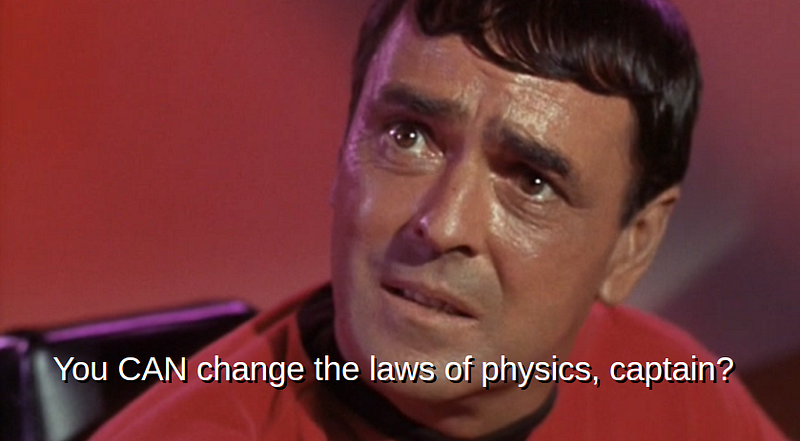
And, bringing me on to my secondary theme…
…We can use the power of the Web
Most of the examples I shared earlier use WebVR, the API that enables full Virtual Reality experiences through your web browser. It’s supported in stable versions of mobile, desktop & VR browsers, like Chrome, Firefox, Edge and Samsung Internet for Gear VR. A polyfill allows you to easily cater for other browsers, for use with Cardboard-type headsets.
Your content can reach anyone on any device, even if they don’t have a VR headset to hand. The Web can excel at creating a single application that works across all devices. If you’re sharing a URL, you can’t presume that everyone who clicks that link will have a headset to hand.
We can make VR experiences that are accessible to all, using Progressive Enhancement. Those without a headset can still experience a “magic window” effect that makes use of their device’s accelerometer, or navigate using a touchscreen, keyboard or mouse — while those who have a headset can enjoy the fully-immersive version, right up to the higher-end, 6DOF devices like the Rift and Vive.
By Arturo Paracuellos, via UploadVR
I agree with Brandon Jones when he says…
“The best way to reach the widest number of customers in VR will be via the web”
Virtual Reality brings something very exciting to the Web — virtual environments, 360° immersion, and that indescribable feeling of ‘presence’.
And the Web brings something special to VR too. It’s truly cross-platform, by design. It’s frictionless; you just tap a link or type or URL and you can access it immediately. There are no licence fees to pay. Your content is easily discovered in any search engine. And you can link between apps and experiences.
It’s starting to bring us into the realm of science fiction becoming reality. As Josh Carpenter said…
“When you think about Neuromancer and Snow Crash and their interconnected seamless worlds, it’s pretty much the web that they’re describing. It’s the open web.”
I doubt any of us can really imagine what this will all become, but I hope this post has shared some inspiration and some early examples for what Virtual Reality can be useful for. Much more than just games!
As Winston Churchill said…
“We shape our buildings, and afterwards, our buildings shape us”.
In other words, media shapes the content that we use that media for, which in turn shapes us. It will take a while for us to fully get to grips with Virtual Reality, but when we do, it has the power to change us. So…
…what will you create? 😎
Tagged in Virtual Reality, Webvr, Web, Tech

